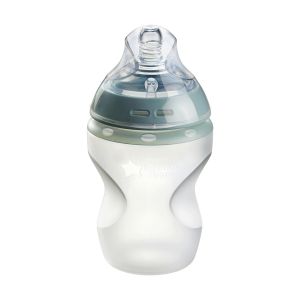
This is a demo store. No orders will be fulfilled.
Subscription orders can be cancelled at anytime. Standard delivery will be charged on each subscription order. Find out more about subscriptions.
They’re easy and fuss free
Your products are automatically sent to you
You save when you sign up for a subscription
You can cancel at any time
Sterilising is particularly important for the first three months of a baby's life, especially if they were born prematurely or have a weakened immune system.
Sterilising their bottles, teats, milk storage containers and soothers - which we know always end up on the floor! - using UV light, steam or specially designed sterilising tablets is crucial. This means that they're free from harmful bacteria and germs that could be passed onto your baby when they feed, and potentially cause tummy upsets and infections.
Read on to learn about when you can stop sterilising your baby's feeding equipment.
As your baby grows, their immune system gets stronger, and eventually, you'll no longer need to sterilise their feeding equipment.
It's recommended that you wait until your baby is at least 12 months old before you phase out sterilising. It's important to keep using your steriliser until they're one year old to protect them from illnesses like sickness and diarrhoea caused by bacteria that can form in lingering breastmilk or formula.
No, a dishwasher may clean your baby's teats and bottles, but it won't sterilise them. During their first year, it's very important that you thoroughly sterilise your baby's feeding equipment after initially cleaning them by hand or in the dishwasher.
If you stop sterilising your baby's bottles before their first birthday, there's the potential for bacteria to develop on any un-sterilised feeding equipment. This will put them at an increased risk of falling ill and catching an infection like diarrhoea and vomiting. This is because their immune system may not be strong enough to fight off these illnesses.
From six months old, you may want to encourage your little one to drink water from a cup or beaker. These don't need to be sterilised, because they're easier to clean with fewer nooks and crannies than baby bottles (which should be sterilised until your baby is one year old).
Simply wash all cups well using warm soapy water or place them on the top shelf of the dishwasher and then dry them with a clean tea towel.
When weaning from six months onwards, your baby's bowls, bibs and cutlery don't need to be sterilised either. They - like cups used to serve water - can be washed using warm soapy water.